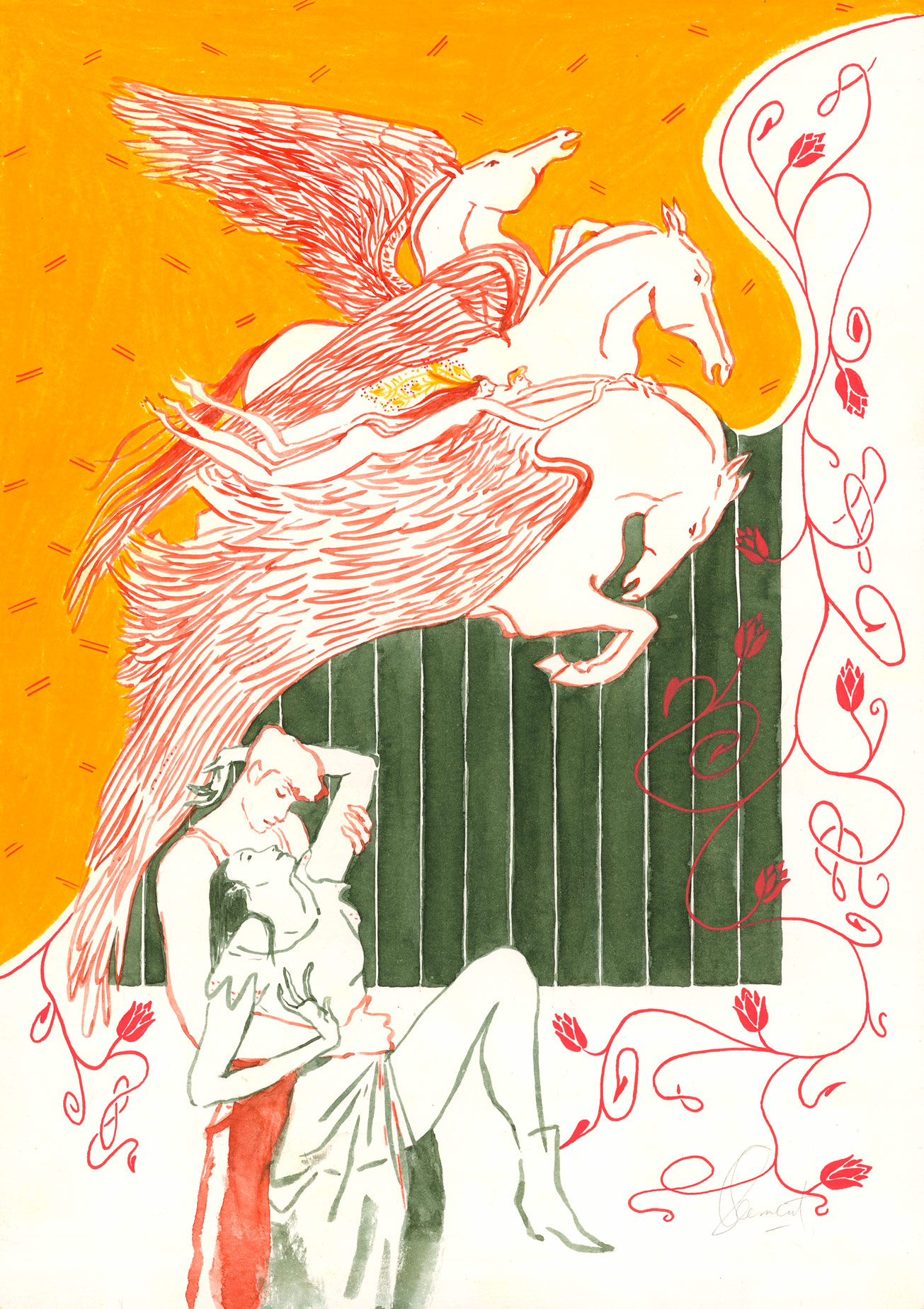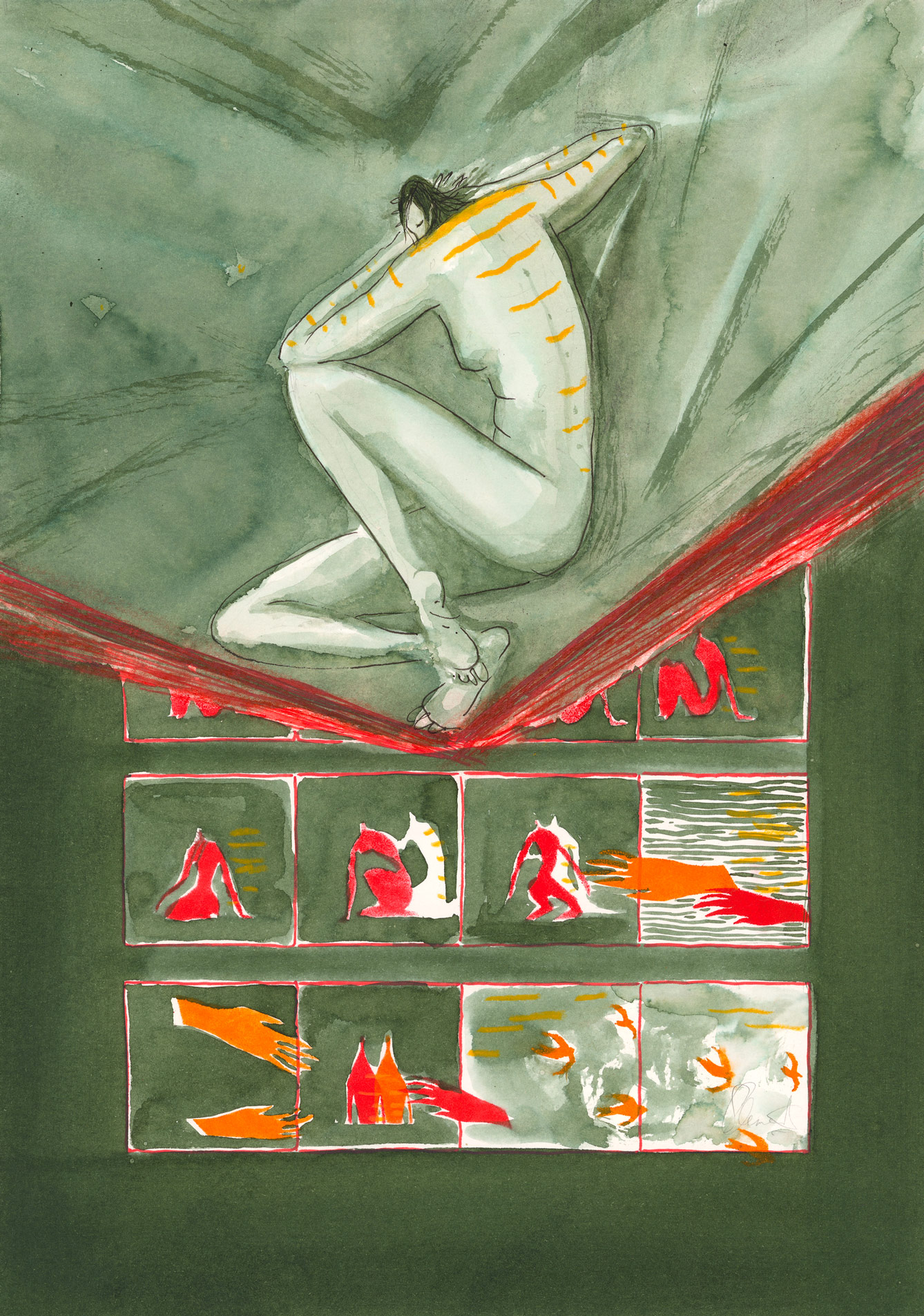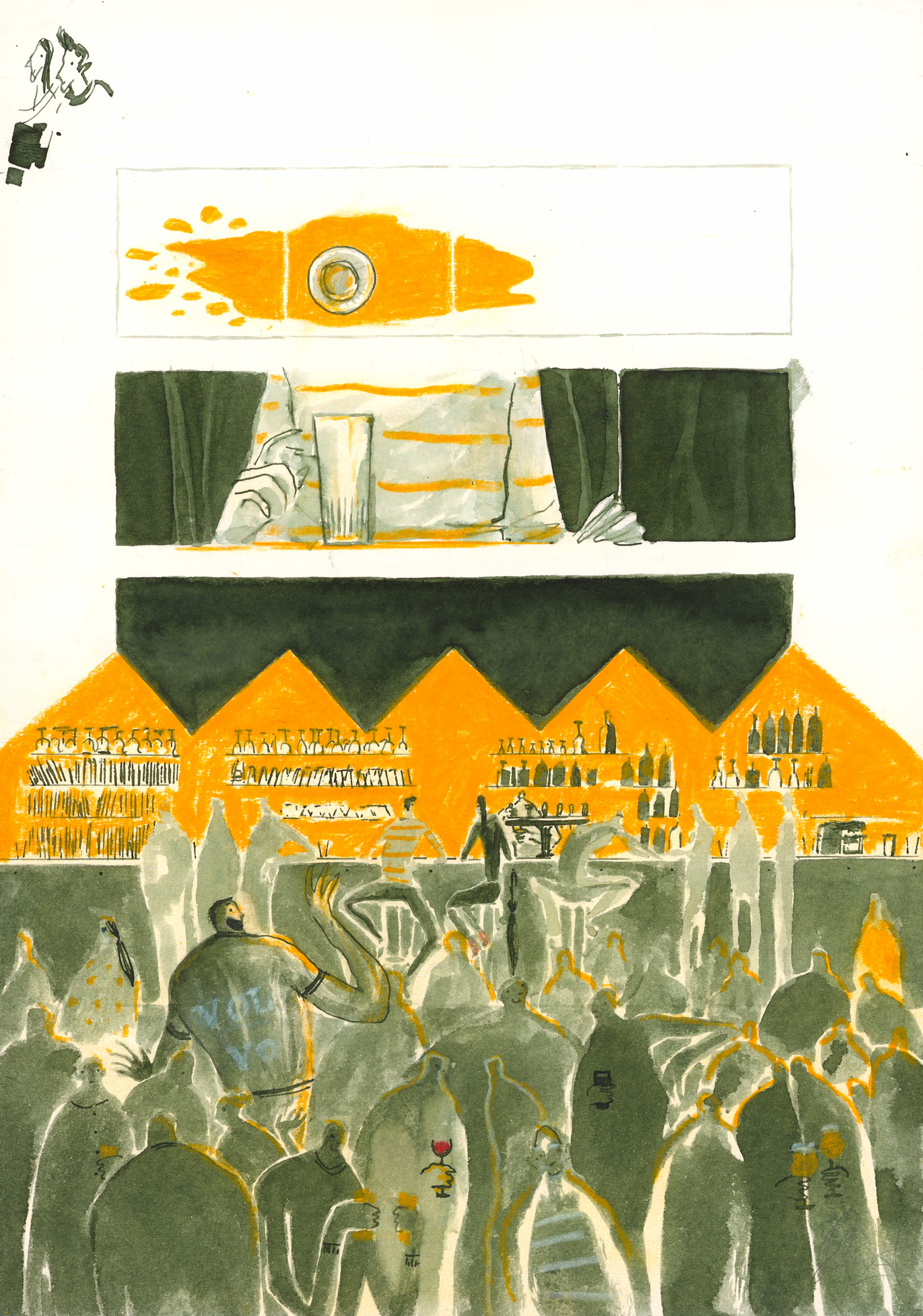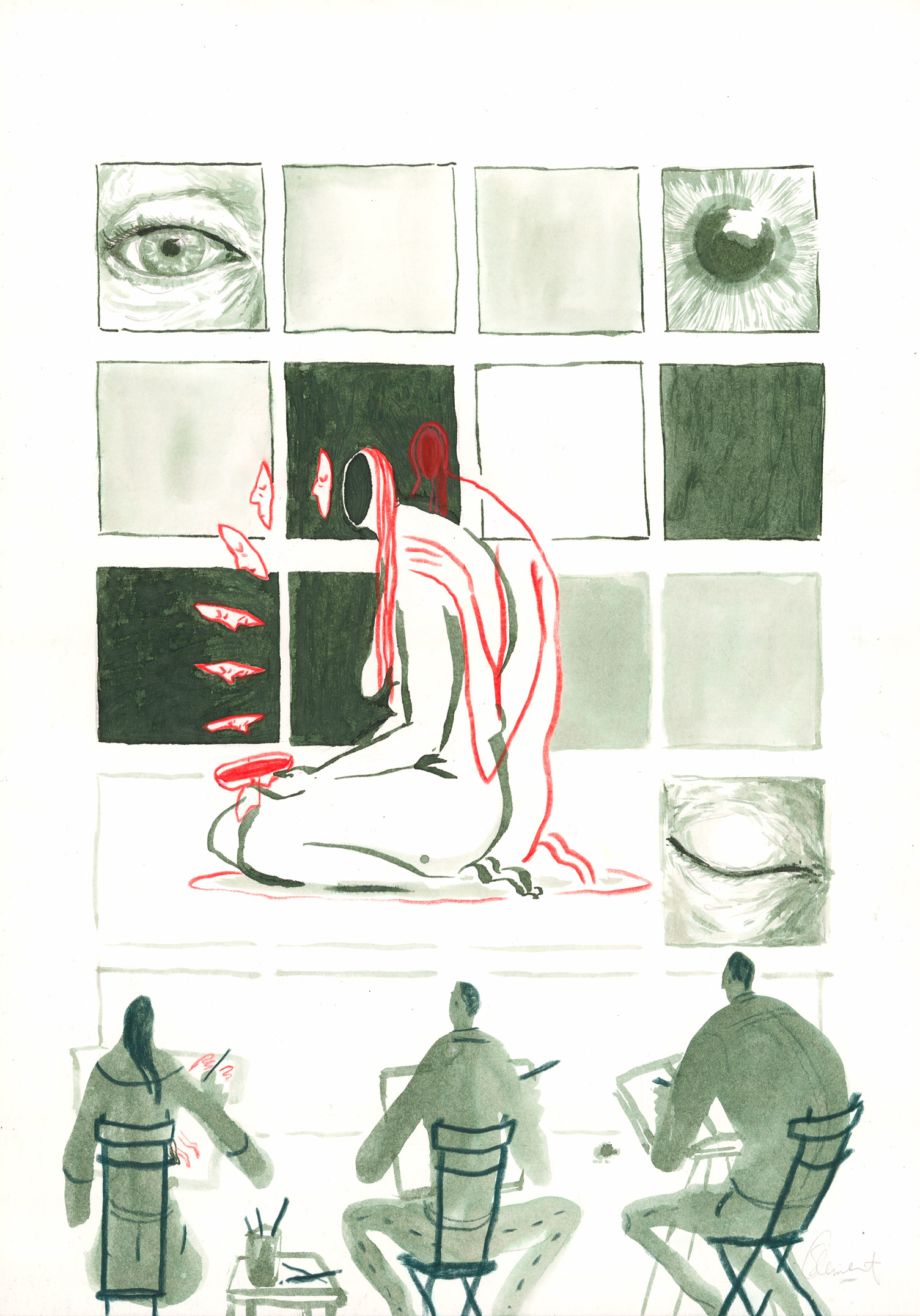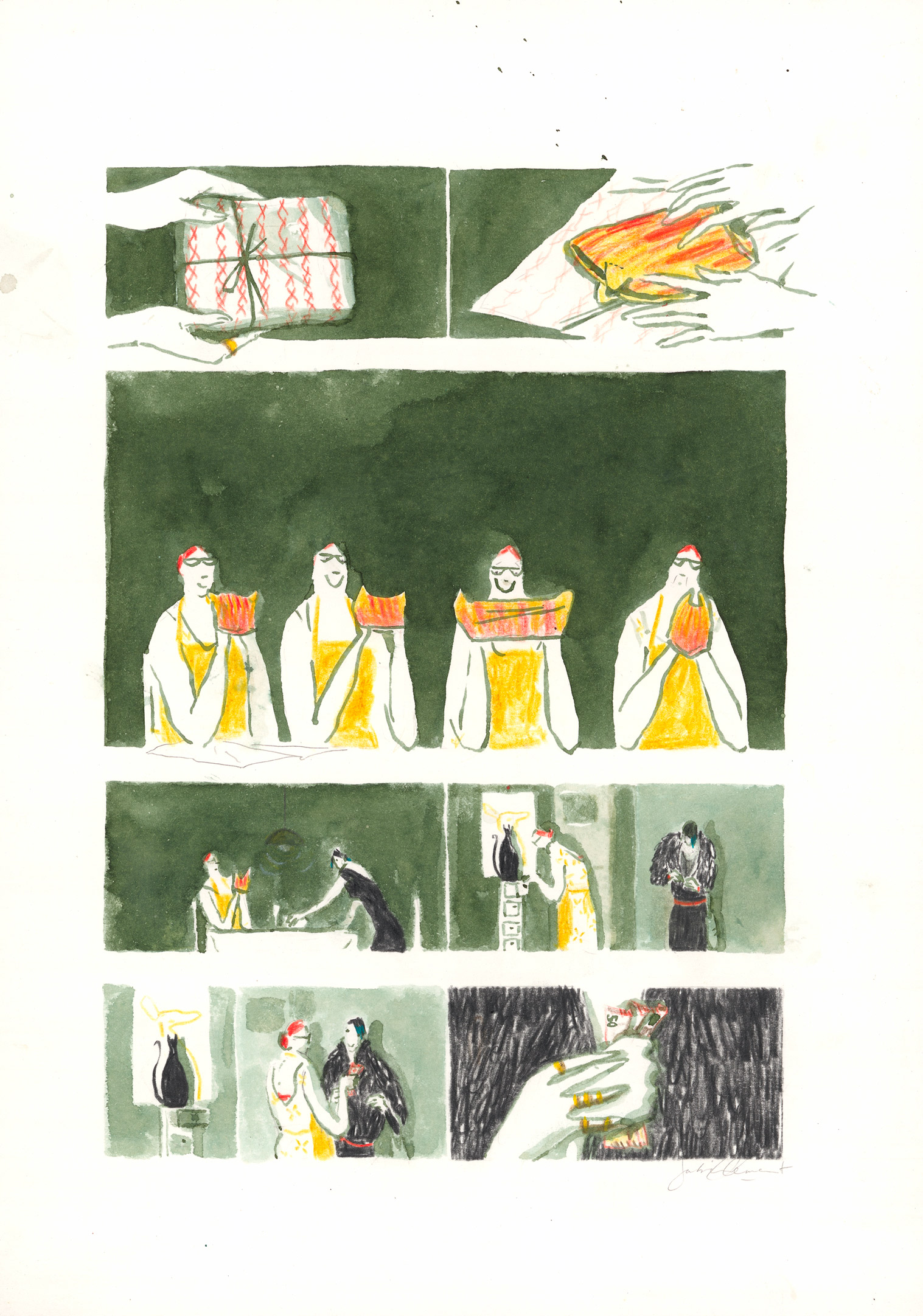Sabien CLEMENT Peau
Presentation
For its 4th exhibition, Mycélium has chosen to work with Sabien Clement, focusing on the theme of the human body and the ways in which it can be represented. Switching between children’s books, drawings, illustration, comic strip and – leaving paper behind altogether – theatrical adaptation and stage drawing, the Flemish artist varies her supports to suit her medium, adapting her technique and way of working – what we might call her action. Because drawing is exactly that – an action, involving a body, on either end of the pencil. The mark made becomes a bridge linking or separating these bodies which are simultaneously subject and object in Sabien Clement’s work.
With 12 small-format drawings that possess the quality of snapshots, Sabien Clement invites us to witness a series of strange intimate moments. Little scenes played out behind closed doors, with the blinds down, bodies deprived of a setting that raise questions about their existence beyond the gaze of others. These undulating bodies each occupy in their own way the space of the page. Placed full centre, or curled in a corner, each of them seems to both communicate and elicit a discourse. There is no artifice here, simply the precision of a drawn line that appears to echo a movement, leaving the rest to the imagination.
Clement’s drawings for Peau, a comic album written by Mieke Versyp and which won the Prix René Goscinny at the last Angoulême comics festival, focus similarly on the body, and how we see and represent it.
The one-word title – Peau – looms large on the cover of the book, which seems to be offering the reader something of a slow dissection of its subject. Its two protagonists, Esther and Rita, flit in and out of view as their story subtly unfolds. As if they were skating around each other on an ice rink, the two women trace their own lines – parallel, symmetrical, random, sometimes faint, sometimes erased altogether – and the drawing reveals how their individual trajectories intersect.
Peau. The word resurfaces in the text itself, in both an actual and a figurative sense, and has an onomatopoeic effect. POW! It is the sound of something being hit – shockwaves on skin, the map of all Rita’s little life scars and the internal monologues, written in italics and preventing her from thinking “straight”. POW! It is the sound of something exploding – Esther’s apparitions, their skin thin to the point of cracking, and the rules of comic strip itself. Mieke Versyp’s words and the marks Sabien Clement makes on the page meet, spill past and complement one another, collide and “dance” together to give us a closely observed portrait of two very different women. Esther draws as a way of understanding and Rita takes off her clothes so she can understand herself. Rita’s “model” body expresses itself; Esther’s drawing is an impression of that body. The drawing, framed-within-the-frame at the start of each chapter, appears to be a means alternately of delimiting the contours of her existence and of transporting the reader into the inner life of another person.
Sabien Clement’s style is impossible to pigeonhole, a combination of direct colours, a lively drawing technique, and a mixture of forms and counter-forms. She draws, crops, fills, empties, tears up, and sticks back together, using multiple techniques – watercolour, gouache, crayon, pastel, etc – while switching between figurative and abstract. Like Esther herself, Clement is not interested in the realism of the drawing but in the experience, the sensation, drawing as free expression. Only the colours seem to be governed by certain rules: green for Esther and yellow for Rita. In every other way, the drawings tend towards a formal boldness, creating a visual symphony that draws the eye and punctuates the narrative. Physical movements become fragmented, de-structured, as in a photograph by Eadweard Muybridge, or merged to the point of blurring and fading out. Sabien Clement experiences her drawing physically, as if through … her skin.
Private view
Friday 8 September 2023, from 6.00 pm to 9.00 pm, in the presence of the artist
Meet the artist
Discussion with Serge Ewenczyk (founder of Éditions ça & là) at 4.00 pm
Saturday 9 September followed by a signing session at 5.00 pm
Exhibition
From Saturday 9 September 2023 to Saturday 30 September 2023
